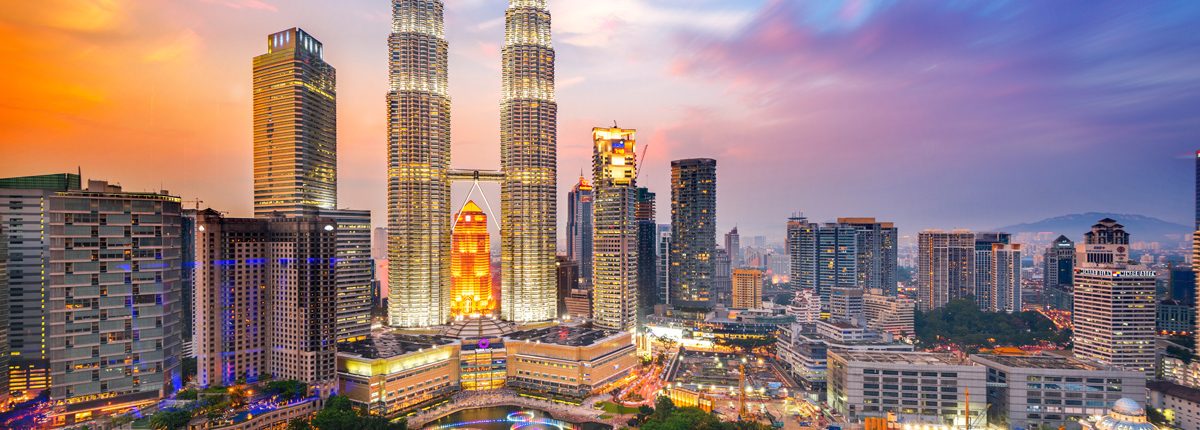The newest iteration of revisions to the MM2H programme has pleased many industry insiders and observers, but left just as many curious, or even wary about what’s been left unsaid. Here, TEG Media CEO Andy Davison shares his personal insights and thoughts about the new direction MM2H appears to be taking.
Having been involved in providing feedback and suggestions during the early days of the MM2H visa, and also marketing it overseas, I became quite attached to it and was happy to promote the programme. It seemed an excellent initiative that allowed foreigners to enjoy all that Malaysia had to offer while contributing to the growth of the economy.
To my mind, it was a win-win proposition. Applicants were encouraged to move here and assured that the conditions under which they applied would not be changed and they would be most welcome here. The programme became regarded as one of the best retirement visa options of the many available around the world. Many retirees settled here, buying houses, cars and other capital items and our research showed an average monthly spend of around RM10,000.
Malaysia became known as a country that welcomed foreigners and this helped inbound tourism and foreign direct investment. Family and friends flocked to Malaysia to visit visa holders, and the word about Malaysia’s many attractions spread exponentially. Lifestyle is usually a consideration when corporations make investments overseas. Seeing that people chose to come and live in Malaysia was a positive factor in persuading investors that Malaysia was a good choice.
That all came crashing down during Covid, not because of the virus itself, but because of the decisions that were made during that period. This included suddenly denying nearly all visa applications, locking MM2H visa holders out of the country, and then suspending the visa programme altogether. When a revised set of conditions for the visa was eventually announced, most interested applicants found they were no longer eligible. Malaysia quickly disappeared from the top of various global lists showing the best places to retire.
The programme was open to adults of all ages, and in some respects that was a potential weakness, as there was a strong possibility that younger applicants would seek employment. It also failed to offer a viable avenue for those who were retired, but were willing to offer their services to assist local businesses.
The concerns expressed by some that the country would be flooded with retirees were not valid, as the annual approved applicants never surpassed 10,000, while Malaysia’s own population was increasing by over 500,000 people a year. Compare that with Singapore which has more permanent residents (PRs) approved each year than new citizens born into the country. However, unlike Singapore, Malaysia has always been reluctant to give anyone PR – and even more so when it comes to citizenship.
We had hoped the newest version of the rules would offer a retirement visa to meet the needs of this very sizeable group of people who are interested in settling outside their own country. Many were looking for a place to relocate, buy a home and settle down. A critical requirement was knowing they could stay indefinitely and that the requirements to qualify for the visa would, for them, remain unchanged. This was supposed to be the case in Malaysia, but changes made during Covid caused people to doubt Malaysia’s word.
The latest version of the visa has three tiers – silver, gold, and platinum – which are largely distinguished by the size of the fixed deposits applicants have to make. The higher the deposit, the longer you can stay.
The following are my observations at this point:
1. There is no indication that the new rules will affect existing MM2H visa holders.
2. Under the existing current programme, applicants have to show a monthly income of RM40,000 a month, an amount that is too high for most retirees. However, the latest rules make no mention of the required income or even if there is an income requirement. Not having any income requirement could open the programme to people who would struggle to survive here and thus make little contribution to the economy.
3. The same goes for liquid assets. Currently, applicants have to show the equivalent of RM1.5 million in cash assets before applying, but nothing is stated regarding liquid assets in the new rules. Having said that, I have actually never been in favour of that particular requirement. To my mind, the key requirement is that applicants can place the required fixed deposit.
4. The lowest tier, silver, gives a five-year visa and requires a RM500,000 fixed deposit, which is half the current amount. Approved applicants still have to wait a year before being allowed to withdraw any funds and then only for specific items. This time there was no mention of withdrawing money to cover educational costs, which was previously permitted.
5. The next tier up, gold, with a required deposit of RM2,000,000 comes with a 15-year renewable visa. Malaysian law restricts all long-term visas to a maximum of five years, so I assume each renewal will be easy to make. However, the silver visa is also renewable, so it is unclear how much harder it will be to renew the silver visa than the “15 years visa” under the gold category, which will undoubtedly be issued for three periods of five years each.
6. The decision to permit applications for Permanent Residency to the platinum tier, who must deposit RM5 million, is surprising since Malaysia has always been very reluctant to give PR to foreigners. It will be interesting to see how easy they will make the application process, because in the past even people who qualify have waited many years to get approval.
7. They are still insisting you leave the full amount of the deposit in place for one year before allowing a partial withdrawal of 50%. The reason for this is not clear, but it has been a feature of the programme since it was first launched. Since the deposit has been known to dissuade people from buying property, we think it might be better to waive the deposit if people buy a home.
8. The visa is not clear about permission to work. Currently, visa holders can work for a Malaysian company for up to 20 hours a week ,but the approval process is cumbersome and it seems few people apply. It is reasonable to assume that those interested in Permanent Residency under the platinum tier would be looking for some kind of employment, but it is not yet known if they will be allowed to work up until the time they receive PR.
9. The visa seems to be open to people aged 30 and over, which is very young unless they are permitted to work. It is not clear who they are targeting here. Once again, that is why we have long advocated a genuine retirement visa with minimum age of say, 50.
10. Another concern is the 60 days residency requirement. For someone who relocates here, it is not a problem, but for a person who buys a holiday home with plans to relocate here in the future, it would likely mean they could not join. It might persuade potential holiday home purchasers not to buy, whereas having a separate investment visa category without the 60-day residency rule might capture another segment.
A final, but crucial, missing piece of information is when this new policy takes effect. We assume it will be January next year, but it was not specified.
I believe it will take a while for Malaysia to regain its popularity as a place to retire. Hopefully, the relaxed conditions and these three MM2H visa options will eventually attract back some of the many thousands of people who were turned away from Malaysia.
"ExpatGo welcomes and encourages comments, input, and divergent opinions. However, we kindly request that you use suitable language in your comments, and refrain from any sort of personal attack, hate speech, or disparaging rhetoric. Comments not in line with this are subject to removal from the site. "























